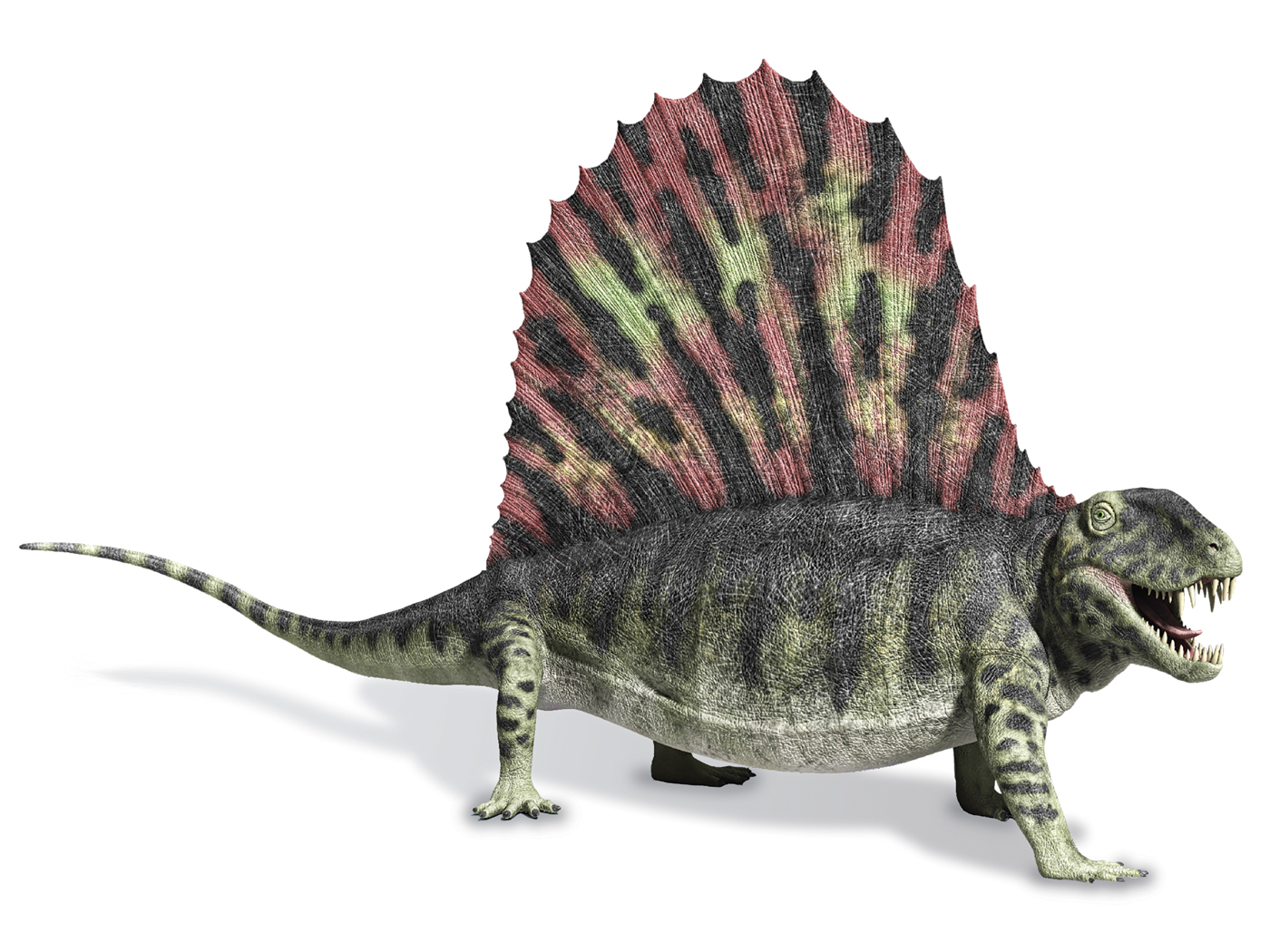It is not uncommon to read that ice cores from the polar regions contain records of climatic change from the distant past. Research teams from the United States, the Soviet Union, Denmark, and France have bored holes over a mile deep into the ice near the poles and removed samples for analysis in their laboratories.
Based on flow models, the variation of oxygen isotopes, the concentration of carbon dioxide in trapped air bubbles, the presence of oxygen isotopes, acid concentrations, and particulates, they believe the lowest layers of the ice sheets were laid down over 160,000 years ago. Annual oscillations of such quantities are often evident in the record.
Are these records in the ice legitimate? Do they cause a problem for the recent-creation model of earth history? What are we to make of these data? This article will show that the great ages reported for the bottom layers of ice sheets depend on assumed models of past climate and are not the result of direct counting of layers. An alternative model of recent glacier formation following the Flood described in Genesis will be suggested.
The Greenland Society of Atlanta has recently attempted to excavate a 10-foot diameter shaft in the Greenland ice pack to remove two B-17 Flying Fortresses and six P-38 Lightning fighters trapped under an estimated 250 feet of ice for almost 50 years (Bloomberg, 1989). Aside from the fascination with salvaging several vintage aircraft for parts and movie rights, the fact that these aircraft were buried so deeply in such a short time focuses attention on the time scales used to estimate the chronologies of ice.
If the aircraft were buried under about 250 feet of ice and snow in about 50 years, this means the ice sheet has been accumulating at an average rate of five feet per year. The Greenland ice sheet averages almost 4000 feet thick. If we were to assume the ice sheet has been accumulating at this rate since its beginning, it would take less than 1000 years for it to form and the recent-creation model might seem to be vindicated.
However, life is never as simple as implied above. In making our calculations, we did not take into account the compaction of the snow into ice as it is weighted down by the snow above. Neither did we consider the thinning of ice layers as the tremendous weight above forces the ice at lower levels to squeeze out horizontally. More importantly, we did not consider the average precipitation rate and actual depths of ice for different locations on the Greenland ice sheet.
When these factors are taken into account, the average annual thickness of ice at Camp Century located near the northern tip of Greenland is believed to vary from about fourteen inches near the surface to less than two inches near the bottom (Hammer, et al., 1978). If, for simplicity, we assume the average annual thickness to be the mean between the annual thickness at the top and at the bottom (about eight inches), this still gives an age of less than 6000 years for the 4000-foot-thick ice sheet to form under uniformitarian conditions.
This is in relatively good agreement with the number of annual oscillations of ð18O currently observed in Greenland cores. Although occasional ambiguities occur, it is relatively easy to count annual layers downward from the surface through considerable depths in the Greenland ice sheet. This is possible because of the large precipitation rates in Greenland and the preservation of the annual effects.
It is also possible with a high degree of accuracy to cross check the counting of annual layers with occasional peaks in acidity and particulates from the fallout of historic volcanic events. Hammer, et al. (1978) have correlated the peaks in the mean acidity of annual layers from 553 to 1972 A.D. with historic volcanic events. About a dozen historical volcanic eruptions are evident in the ice core from Crete in central Greenland. Several unknown eruptions are also documented in the ice core record.
The confidence in the chronology becomes less the lower in the ice sheet one goes, however. The amplitude of the annual oscillations slowly decreases relative to other factors, and historic markers are fewer and farther apart. Glaciologists estimate that uncertainties in identification of layers will probably limit the number of countable layers to less than about 8,500 (Hammer, et al., 1978).
The claims that layers of ice were formed 160,000 years ago or more come primarily from interpretation of ice cores in Antarctica (Jouzel, et al., 1987; Barnola, et al., l987). The Soviet Antarctic Expeditions at Vostok in East Antarctica recovered an ice core which was almost 7,000 feet long in a region where the total ice thickness is about 12,000 feet (Lorius, et al., 1979; Lorius, et al., 1985). Since the current precipitation rate is so much less than Greenland (on the order of one inch per year) the crude calculation of age, without corrections for compression and horizontal motion for the lowest layers is more than 100,000 years.
However, such estimates are critically based on the assumption that the accumulation rate has not varied greatly over the past. Unlike the Greenland ice cores, annual oscillations of ð18O and other parameters cannot be traced deeply into the ice sheet on Antarctica. In Greenland, the high precipitation rates not only provide relatively thick annual layers for analysis, but the accumulating snow quickly seals off the ice beneath and protects the record from metamorphosis by pressure and temperature changes in the atmosphere. In Antarctica, by the time the ice has been buried deeply enough to no longer be influenced by the atmosphere, annual variations have been greatly dampened by diffusion (Epstein, et al., 1965; Johnsen, et al., 1972).
The technique used to estimate the age of an ice layer deep in the ice sheet is to measure its ð18O content and compute the atmospheric temperature which is observed to produce such concentrations today (Jouzel and Merlivat, 1984). Through a second-known relation between temperature and precipitation rate, again observed in today's atmosphere, the accumulation rate for a given layer is calculated (Lorius, et al., 1985). Once the accumulation rate is calculated for each layer, the depth and age for each layer in the ice is calculated by integrating the annual accumulation downward from the surface.
There are several historical markers in Antarctica which can be used to cross check these calculations for the past few thousand years. But historical volcanic events are not known beyond a few thousand years in the past which provide any certainty to the calculation of age. This method would be reasonably reliable if precipitation rates had been similar in the past. However, some creationist models predict significant quantities of snow immediately after the Flood (Oard, 1990). Perhaps as much as 95% of the ice near the poles could have accumulated in the first 500 years or so after the Flood.
From a creationist perspective, it would be extremely valuable to thoroughly explore these ice-core data. We would not assume that the precipitation rate has always been similar to that of today. We would expect considerably higher precipitation rates immediately following the Flood. The layers of ice near the bottom of the core should be thicker than expected by the uniformitarian model and contain unusual excursions in ð18O, acidity, and particulates from levels higher in the core. The "annual" layers deep in the Greenland ice sheet may be related to individual storms rather than seasonal accumulations. If these evidences are found, direct information on conditions following the Flood would be available to us.
Nothing in the ice-core data from either Greenland or Antarctica requires the earth to be of great age. In fact, there are good reasons to believe that the ice cores are revealing important information about conditions following the Flood of Genesis and the recent formation of thick ice sheets. Reports of ice-core data containing records of climatic changes as far back as 160,000 years in the past are dependent upon interpretations of these data which could be seriously wrong, if the Genesis Flood occurred as described in the Bible. Further research on ice-core data should be a high priority for creationist researchers.
REFERENCES
Barnola, J.M., D. Raynaud, Y.S. Korotkevich, and C. Lorius, 1987. "Vostok ice core provides 160,000-year record of atmospheric carbon dioxide." Nature, 329:408.
Bloomberg, R., 1989. "WW II planes to be deiced." Engineering Report, March 9.
Epstein, S., R.P. Sharp, and A.J. Gow, 1965. "Six-year record of oxygen and hydrogen isotope variations in south pole fire." Journal of Geophysical Research, 70:1809.
Hammer, C.U., H.B. Clausen, W. Dansgaard, N. Gundestrup, S.J. Johnsen, and N. Reeh, 1978. "Dating of Greenland ice cores by flow models, isotopes, volcanic debris, and continental dust." Journal of Glaciology, 20:3.
Hammer, C.U., H.B. Clausen, and W. Dansgaard, 1980. "Greenland ice sheet evidence of post-glacial vulcanism and its climate impact." Nature, 288:230.
Johnsen, S.J., W. Dansgeard, and H.B. Clausen, 1972. "Oxygen isotope profiles through the Antarctic and Greenland ice sheets." Nature, 235:429.
Jouzel, J. and L. Merlivat, 1984. "Deuterium and oxygen 18 in precipitation: modeling of the isotopic effects during snow formation." Journal of Geophysical Research, 89:11, 749.
Jonzel, J., C. Lorius, J.R. Petit, C. Genthon, N.I. Barkov, M. Kotlyakov, and M. Petrov, 1987. "Vostok ice core: a continuous isotope temperature record over the last climatic cycle (160,000 years)." Nature, 329:403.
Lorius, C., L. Merlivat, J. Jonzel, and M. Pourchet, 1979. "A 30,000-yr isotope climatic record from Antarctic ice." Nature, 280:644.
Lorius, C., J. Jouzel, C. Ritz, L. Merlivat, N.I. Barkov, Y.S. Korotkevich, and V.M. Kotlyakov, 1985. "A 160,000-year climatic record from Antarctic ice." Nature, 316:591.
Oard, M.J., 1990. "An Ice Age Caused by the Genesis Flood." ICR Monograph, 243 pp.
* Dr. Larry Vardiman is Chairman of the ICR Physics Department.











